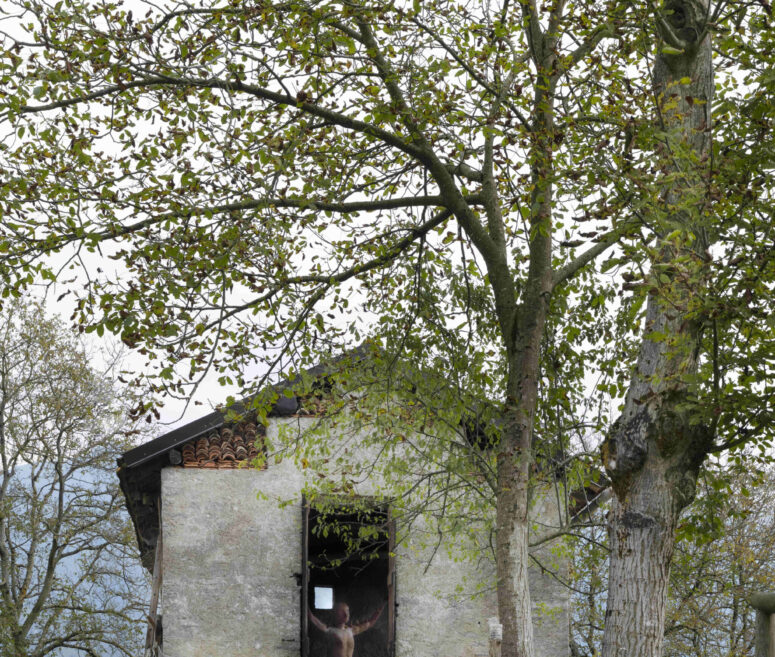The project developed by Gaia Fugazza (Milano, 1985) in collaboration with NAHR – Nature, Art & Habitat Residency, following a residency in Val Taleggio, takes the form of a large-scale sculpture made of Impruneta clay. Hand-built using the coil technique and deliberately left unsmoothed, the material’s porosity allows salts to emerge on the surface, forming a whitish, cheese-like patina that gives the work a living quality, in constant transformation.
The sculpture represents a human figure inspired by the plant Mother of Millions (Kalanchoe delagoensis), a succulent native to Madagascar capable of reproducing asexually by generating clones along the edges of its leaves: new shoots that, when they fall to the ground, produce other plants. For Fugazza, this regenerative ability becomes a metaphor where the vegetal and the human mirror each other in a shared tension toward continuity and transformation.
The figure is modeled with outstretched arms in a gesture that seems at once to support the effort of rising and to offer an embrace to the community, evoking mutual support. The arms, laden with bud-like offspring, appear both ready to welcome a further multitude and at the same time seeking strength in order to rise and carry on. The absence of defined facial features removes any sense of individual identity, transforming the sculpture into a collective body, one that sustains the community and to which it, in turn, belongs. Mother of Millions raises implicit questions: Who takes care? Who receives care? To whom is the obligation of care assigned? To reflect on these questions means recognizing the generative power of care itself, its capacity to foster collective thinking and to bring forth critical knowledge and practices.
The surface of the work is etched and pigmented with depictions of plants, flowers, grazing animals, shepherd dogs, and the meadows of transhumance—visual fragments gathered by Fugazza during her stay in Val Taleggio. These signs, impressed into the terracotta, evoke an archaic language, recalling the memory of rock engravings as some of the earliest gestures through which human communities inscribed their presence in the world. Where once elongated humanoids, therianthropic figures, and other marks told of ritual practices, divinations, or altered states of consciousness, here they become the very skin of the body-sculpture, incorporating and restituting the surrounding landscape. They connect the human to the more-than-human, the corporeal to the cosmic. There is no separation between body and environment: the body is landscape, and the landscape is body. This osmosis affirms an invitation to rethink the human not as “other” than nature, but as an inseparable part of an extended ecosystem.
Installed in the Stalla Gherba of Sottochiesa, a rural building in Val Taleggio rich with character, the work establishes a profound dialogue with a space that traditionally shelters animals and daily labor, while opening onto the valley beyond. This place of sustenance becomes here the custodian of a sculpture that interrogates the relationship between care, regeneration, and community.
Fugazza’s practice has long been characterized by the creation of human figures that, while retaining anthropomorphic traits, freely transform into other beings and species, eluding rigid identity definitions. These are bodies in constant metamorphosis, crossing biological, sexual, and cultural boundaries, embodying a form of nomadism that goes beyond the formal dimension to assume political and ecological meaning. Her works propose a body that does not root itself, but rather hybridizes and reinvents, reflecting the condition of mountain communities: often perceived as isolated, yet finding their strength precisely in adaptability and mutual support.
The sculpture thus becomes the symbol of a universal body—fragile and powerful at once—inviting us to imagine the human as part of an ecosystem in continual transformation. A body that, like the plant from which it draws inspiration, generates and regenerates, multiplies, and offers itself to the multitude.





